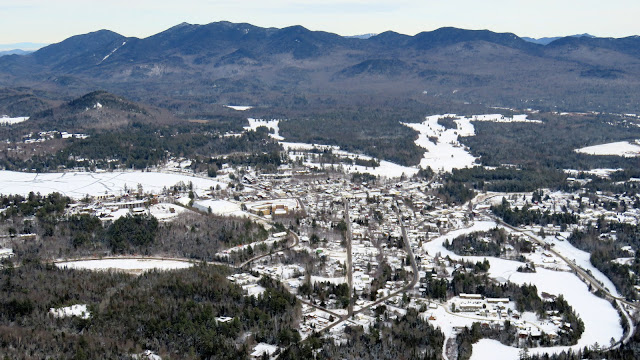| Date | Aircraft | Route of Flight | Time (hrs) | Total (hrs) |
| 27 Dec 2020 | N21481 | SDC (Sodus, NY) - ROC (Rochester, NY) - IUA (Canandaigua, NY) - SDC | 2.1 | 2202.5 |
After a pandemic summer spent with Warrior 481 stranded sans powerplant in Dansville for several months, my instrument currency seriously lapsed. Since getting back to flying in July, I have logged 6.6 hours of simulated instrument time with 18 approaches representing a mixture of ILS, RNAV, VOR, and LOC type approaches. Special thanks to both Dave P and Tom C for their willingness to mask up and ride right seat with me as safety pilots for a couple of hours at a time.
My final practice session of the year came a couple of days after Christmas. I drove to the airport in pre-dawn darkness, very aware of being fuzzy-headed after a poor night's sleep. Experience has shown that this can either be a recipe for disaster (OK, to be precise, poor performance) or that I'll summon some energy from somewhere and demonstrate ability vaguely in-line with being an FAA-rated instrument pilot. While I waited for Dave to arrive at the airport, I wondered which way the morning would go.
 |
| ForeFlight ground track |
The plan was to launch from Sodus and fly toward Rochester to intercept the ILS-28 there, followed by the RNAV-25, RNAV-28, and ILS-22. Next, I'd fly the published missed approach procedure for the ILS-22 to orbit over the Genesee VOR, then embark on the VOR-A into Canandaigua and, finally, the RNAV-28 back into home. I planned to get six approaches with a hold in the most time-efficient way possible.
Despite being a little mentally slow, the first four approaches at Rochester were really well-flown as can be observed from the nice straight flight paths and crisp interceptions of the final approach courses. I felt like I was S-turning a lot on the first ILS, but the magnitude was small and it tightened up over the course of the morning. While flying one of the ILS procedures, I had the glide slope and localizer needles on the CDI centered so exactly that I found myself wondering, "Is this thing on?" It was!
South of Rochester, the ceiling dropped and we had to improvise our altitude to remain VFR as I stole occasional peaks from under the hood to monitor the cloud bases. Pitot heat went on just in case. I successfully flew the hold entry using just the navigation radio (this requires more spatial visualization than slavishly following the GPS), though a crosswind necessitated a steeper bank than normally desired to intercept the inbound course of the invisible aerial racetrack. This felt a lot sloppier than ForeFlight's ground track suggests.
Crossing back over the station, I turned outbound on the VOR-A toward Canandaigua. Because I was using the navigation radio and only turned onto the VOR-A approach course after observing a flag flip indicating station passage, I did not turn on course after already overshooting the desired track. This sloppiness appears in the above figure where I visibly flew a 10° degree intercept back to the intended 085° radial from Geneseo.
With 13.5 miles between Geneseo and SECKY, the final approach fix for the procedure, I had time to ponder how I could have transitioned from the hold to the VOR approach more elegantly. Using the GPS would have helped. While flying the holding pattern by VOR, I could have loaded the VOR-A approach into Canandaigua, then activated the leg from GEE to SECKY and intercepted that. Alternatively, I could have used radio navigation only by setting my other VOR CDI to the inbound course for Canandaigua and simply intercepting it prior to reaching the VOR holding fix. Working through the thought process for that transition was a valuable exercise.
Once established on it, I flew the VOR procedure well. After tracking the much more precise ILS and RNAV approaches that morning, keeping the VOR needle centered did not require much effort. Good thing, too. I was getting tired.
As for the sixth approach to wind up at home, I think I can fly that one in my sleep at this point.
With my instrument currency refreshed through June 2021, I think that I am well-positioned to make it through the long dark winter when forays into ice-laden clouds are best avoided. This practice session made for a satisfying end to the year. I have no illusions about being any kind of IFR Jedi Master, but I think I do...OK. And at this rate, it is very likely that I will have new avionics installed before I fly another instrument approach in my airplane.



























































